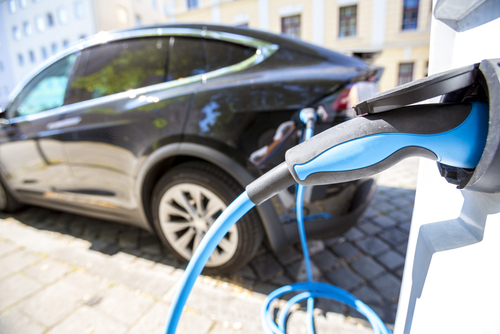American Association of Blacks in Energy supports policies for universally available EVs

Electric vehicles (EVs) can be made more available to diverse American populations via policies that incentivize the nation’s electric sector to make the corresponding and needed investments in infrastructure development, according to a newly released white paper from the American Association of Blacks in Energy (AABE), a 2,000-member national energy trade association representing all sectors of the energy industry.
“Utility regulators will play the necessary and essential role of establishing equitable market growth across diverse incomes and communities,” writes Paula Glover, president and chief executive officer of AABE, in Charging Ahead with Vehicle Electrification: Understanding Developments in International and U.S. Markets–and Implications for Wider U.S. Adoption, released last week.
“Advances in technology will have the result of lowering the cost of personal electric vehicles. However, charging infrastructure development is the essential component to wide EV adoption, and will determine next-generation purchasers and their access to emerging EV technologies,” Glover said.
That point is echoed in the newly released, separate report from the Edison Electric Institute (EEI) and the Institute for Electric Innovation (IEI) entitled, Electric Vehicle Sales Forecast and the Charging Infrastructure Required Through 2030, which noted that roughly 9.6 million EV charge ports will be required to support the 18.7 million EVs that EEI and IEI predict will be on American roads by 2030.
“Electric companies across the country increasingly are gaining state regulatory approval to invest in electric transportation,” according to the authors of the EEI/IEI report. “These investments are primarily in EV charging infrastructure deployment, but also may include charging infrastructure for other applications (such as medium- and heavy-duty trucks and buses), as well as other market support activities, such as customer education and outreach.”
EEI represents all of the nation’s investor-owned electric companies, which EEI President Tom Kuhn said to date have invested $1.1 billion in customer programs and projects to deploy charging infrastructure and hasten electric transportation.
“And we fully expect that number to continue to rise,” he said during a Nov. 30 EEI event to celebrate 1 million EVs currently being driven in the United States.
AABE wants to ensure that everyone in the country will be able to afford these EVs, access necessary charging stations where they live, and pay affordable prices. Therefore, according to AABE, state regulators must develop policies that encourage market entry in urban communities, particularly targeting moderate and low-income consumers.
“The Association also supports infrastructure development policies requiring Level 2 and fast charging deployment in places where people of color and moderate incomes reside, including in urban counties and cities,” Glover writes in the AABE white paper.
“In that these investments often require large and intensive capital investments, including grid infrastructure improvements, regulators and others should identify best models to incentivize grid investments to pave the way for urban EV adoption,” she concluded.
So far, Glover said, AABE research has shown that EV adoption in the United States has been greatest in wealthier communities. However, with technology advancements and increased EV infrastructure availability, the association expects EV prices to decrease.
Nonetheless, the key to wider adoption is the development of charging infrastructure, Glover said. “If infrastructure is not developed in low- and moderate-income communities, then EV purchases in these areas is less likely,” she said.
The AABE white paper demonstrates the need for supportive infrastructure to support EV adoption nationwide; identifies best models and practices to ensure EV charging infrastructure and adoption reach beyond places of early EV maturation and into urban communities, including moderate and low-income areas; and shows the impact that additional EV maturation would have on the grid, as well as the need for infrastructure investments to support increased demand, according to AABE.
“When we consider that moderate and low-income demographics have yet to adopt electric vehicles in appreciable numbers, it’s essential that policymaking impacting charging infrastructure location and build out, EV purchase incentives, rate making, and determinations of who constructs, operates and owns the infrastructure be developed with an interest ensuring benefits to communities of color, including moderate and low-income communities,” Glover said.
Federal-level policy also should heed such recommendations to encourage the work electric companies are already engaged in – with automakers, nonprofits, environmentalists, state regulators, consumer advocates, and other stakeholders – to bring more EV infrastructure to all Americans, said several participants during Friday’s EEI event in Washington, D.C.
In examining EV adoption, the AABE white paper focuses on the international market, identifying Norway as a market adoption and infrastructure development leader. Perspectives on the United Kingdom, France, China and the Netherlands also are included, according to an AABE statement, as are related California policy development around different charging infrastructure operation and management models.
